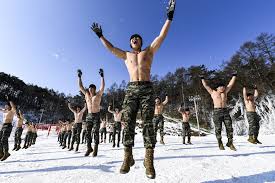Rucking, or hiking with a heavy pack, is nothing new to those who serve. In boot camp, in training, or in combat, rucking can be an arduous soul sucking activity that makes you regret some if not all of your life choices. When participating in a ruck outside of the military on the other hand, there is so much more room for activities! Not being driven at a breakneck pace by a man in his thirties who looks like the Crypt Keeper and is on his third divorce means you can take some time to appreciate the world around you as you move. With that idea in mind, here are five trails to train on in 2024.
Stretching over 2,190 miles from Springer Mountain in Georgia to Mount Katahdin in Maine, the Appalachian Trail is a legendary hiking destination. One of the longest continuous footpaths in the world, it can take months to hike the entire length even at a solid pace, but there are plenty of side trails to get you on and off for whatever piece you choose to tackle.
Beginning in the south, the trail weaves through the Great Smoky Mountains National Park, which military and veterans can access for free, and continues to Mount Katahdin’s Baxter Peak. Along the path are a series of changing ecosystems, open meadows, and trail towns. The beauty of the AT lies not only in its natural wonders, but in the experience and the spectrum of places to stop in to drink water and change your socks.
Pacific Crest Trail, West Coast
On the opposite side of the country, the Pacific Crest Trail runs 2,650 miles from the border of Mexico in California to Canada. Covering three states along the coast, this trail begins in the Mojave Desert only to end in the forest of the Pasayten Wilderness near the Canadian border. The path takes you through the Sierra Nevada mountains, alpine lakes, and volcanic landscapes at the Cascade Ridge.
Like the Appalachian Trail, the entire journey takes months to complete, which requires determination and commitment, but if you do not have the time off for the entire stretch, you can always pick a section that suits you and start walking.
Grand Canyon Rim-to-Rim Trail, Arizona
The Grand Canyon is on its own a visually stunning section of terrain. From either rim one can see sandy, rocky filled switchbacks, lush pockets of dense vegetation, and tributaries of the Colorado River. The canyon is so vast, it is common to see rainstorms occurring in certain spots one can see the entirety of, like something you could put in a bottle.
Rucking the Grand Canyon is a whole other experience, however. From rim to rim is approximately twenty-four miles, and the trail changes from ankle breaking switchbacks to flat paths to mountain ledges, and even then, you are only 10 miles in. Advice from someone who learned the hard way; watch your pack weight and take your time. Even if you stop at the Phantom Ranch at the bottom, you still need to make it back out, and the last three miles are the hardest.
If you have seen Indiana Jones and the Last Crusade (1989), Zion Narrows very much resembles the scrub desert and mountains young Indiana’s troop is riding through during the opening scene of the film. (If not, go watch it and then come back and read this again, since your squad leader failed you.)
The exception is that Zion Narrows is, well, narrow. Following the Virgin River through slot canyons with a mesmerizing interplay of light and shadows on towering sandstone walls, the trail takes you deep through the cut despite the desert around it. Large sections of the journey require you to wade in calf deep waters, so pack your shoes accordingly. The ruck can be completed in a day, or as an overnight trip if you prefer a clear night sky.
The Wonderland Trail, Washington
Built in 1915, the 93 miles of the Wonderland Trail circumnavigates the volcanic peak of Mount Rainier, weaving through the near jungle like forests of the Pacific Northwest. Much like the Pacific Crest Trail, alpine meadows and subalpine lakes fill the scenery, as well as over a dozen glaciers.
River crossings and large elevation changes help ensure that your ruck isn’t just an easy stride, but not to the degree that you start cursing me for suggesting it. Day hikes are simple, just show up and get your straps secured. Overnight or multi day permits are required, as are large group and high altitude (10,000ft+) permits, but if you follow the link above some of that admittedly low price can be mitigated.
Going for a ruck, especially if you’re bringing friends or family along, is excellent cardio and can really build up those bug out muscles for when it comes time to stand up again, (looking at you, Fallout), but the trip can seriously help clear the mind and get your head right. With the day to day stress of micromanaging employers, unwanted social commitments, and the idiot on the expressway that goes five under for no reason, sometimes cinching your shoulder straps, putting the mobile on airplane mode, and putting one foot in front of the other is exactly what is needed to metaphorically sit on your pack and eat an apple, as well as maybe doing the same in the moment.



%201.svg)









